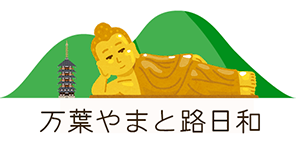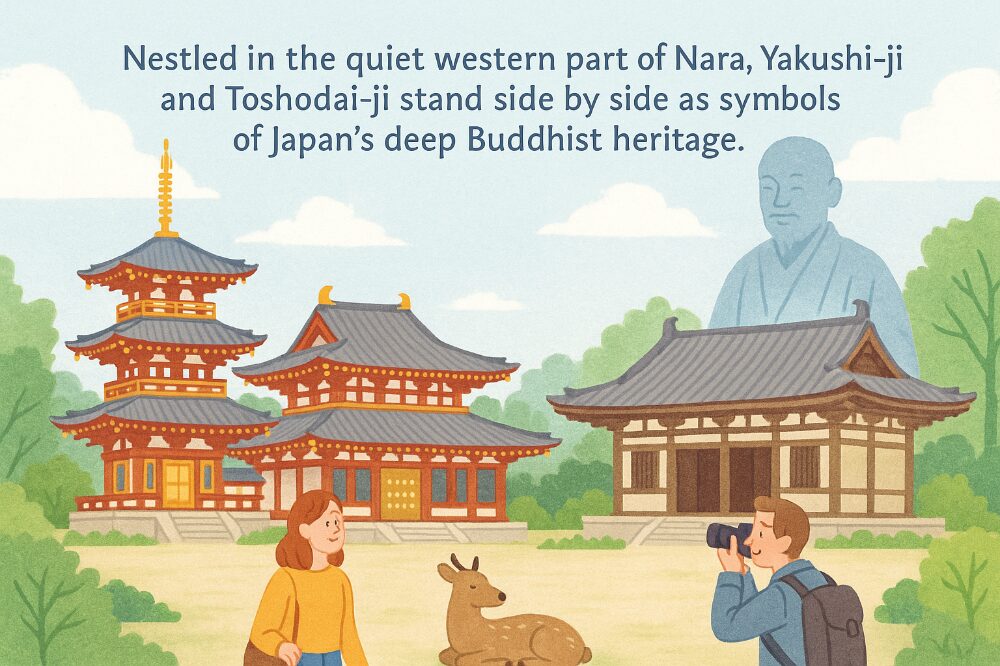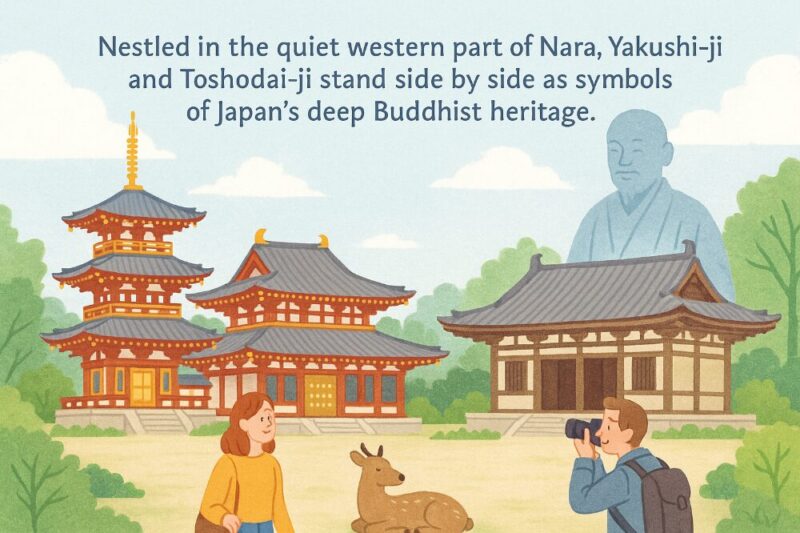
Yakushi-ji Temple|A Masterpiece of Ancient Nara

Yakushi-ji Temple|Discover the Buddha of Healing in Nara
Yakushi-ji Temple is one of the most famous Buddhist temples in Japan, located in the western part of Nara. Founded in the late 7th century by Emperor Tenmu, it was dedicated to Yakushi Nyorai, the Buddha of Healing. The temple has long been a place where people pray for health, peace, and protection. Today, Yakushi-ji is registered as a UNESCO World Heritage Site and attracts visitors from all over the world.
History and Origins
Emperor Tenmu built Yakushi-ji to pray for the recovery of his consort from illness. Over the centuries, the temple became a symbol of faith and healing. Although many of its original buildings were lost due to fire, Yakushi-ji has been carefully reconstructed, preserving the beauty and spirit of Japan’s ancient capital.
Architectural Highlights
- East Pagoda (Tōtō): This elegant three-storied pagoda is the only surviving original structure from the 8th century. Its balanced proportions are admired as a masterpiece of Buddhist architecture.
- Main Hall (Kondō): Inside stands a majestic statue of Yakushi Nyorai, flanked by two Bodhisattvas. The golden glow of the hall creates a powerful and spiritual atmosphere.
- Great Lecture Hall (Daikōdō): A space for Buddhist ceremonies and study, symbolizing the temple’s role as a center of learning.
Cultural Experience

Visitors can take part in traditional activities such as copying sutras (shakyō), a peaceful practice of hand-copying Buddhist scriptures. Even without understanding the words, the act itself is meditative and helps connect with Japanese spirituality.
Practical Information
- Location: About 1 minute walk from Nishinokyō Station (Kintetsu Line)
- Opening Hours: 8:30 AM – 5:00 PM
- Best Time to Visit: Spring and autumn, when the gardens are most beautiful
Yakushi-ji Temple|Golden Halls and Timeless Faith
Yakushi-ji Temple combines history, art, and spirituality in a single place. With its striking pagodas and golden halls, it shows the grandeur of ancient Nara. For travelers, visiting Yakushi-ji is not only a chance to admire architecture but also to experience the timeless values of healing, peace, and faith that continue to inspire people today.
Toshodai-ji Temple|The Legacy of Ganjin
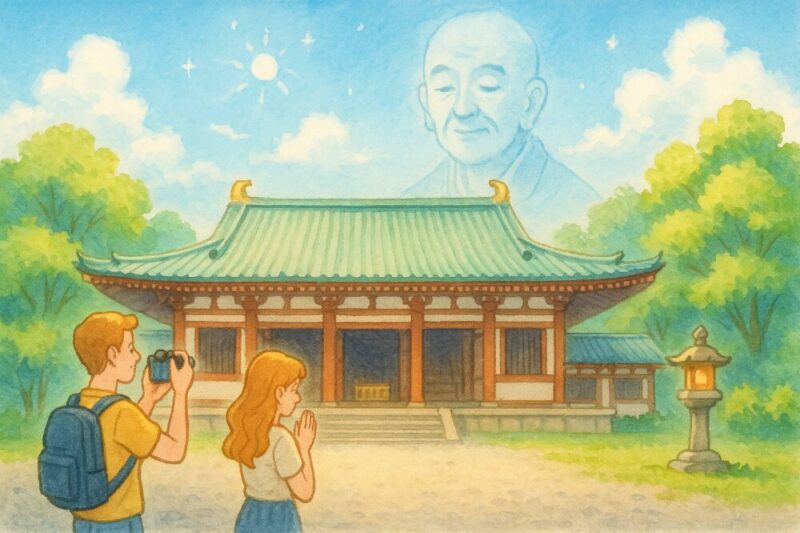
Toshodai-ji Temple|From Ganjin’s Journey to a Timeless Sanctuary
Toshodai-ji Temple is a peaceful Buddhist temple in western Nara, closely connected to the Chinese monk Ganjin (Jianzhen). Founded in 759, the temple became a center of Buddhist learning and practice. Unlike the more famous and grand temples of Nara, Toshodai-ji is known for its quiet, spiritual atmosphere. It is part of the UNESCO World Heritage Sites and remains a place where visitors can feel the deep history of Japanese Buddhism.
The Story of Ganjin
Ganjin was a high-ranking monk from China who made several attempts to travel to Japan in the 8th century. After many hardships—including losing his eyesight—he finally arrived in Nara. He founded Toshodai-ji to spread Buddhist teachings and to train monks. His determination and spirit of sacrifice are remembered to this day, and his wooden statue, created shortly after his death, is considered one of Japan’s most important cultural treasures.
Architectural Highlights
- Main Hall (Kondō): Built in the Nara period, it is one of the oldest surviving wooden structures in Japan. Its simple yet powerful design reflects the spirit of early Japanese Buddhism.
- Lecture Hall (Kōdō): Once part of the imperial palace, this building was moved to Toshodai-ji and used for Buddhist teachings.
- Treasure House (Hōzō): Preserves many valuable artifacts, including ancient Buddhist statues and ritual objects.
Atmosphere and Spirituality
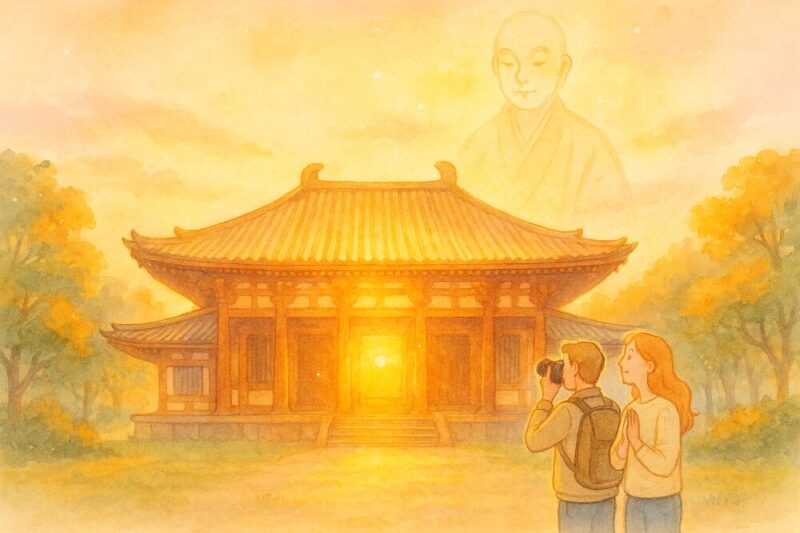
Unlike Yakushi-ji with its golden halls and pagodas, Toshodai-ji offers a calmer and more contemplative experience. Visitors can stroll through moss-covered paths, listen to the sound of birds, and feel the quiet dignity of the temple grounds. It is a place where history, nature, and spirituality come together.
Practical Information
- Location: About 10 minutes on foot from Nishinokyō Station (Kintetsu Line)
- Opening Hours: 8:30 AM – 5:00 PM
- Recommended Season: Early summer for lush greenery, or autumn for colorful leaves
Toshodai-ji Temple|Discover the Quiet Soul of Japanese Buddhism
Toshodai-ji Temple is not just a historical site but also a place where visitors can connect with the story of Ganjin and the early roots of Buddhism in Japan. For travelers seeking a quiet, authentic experience, Toshodai-ji offers a glimpse into a spiritual heritage that has remained unchanged for more than 1,200 years.
